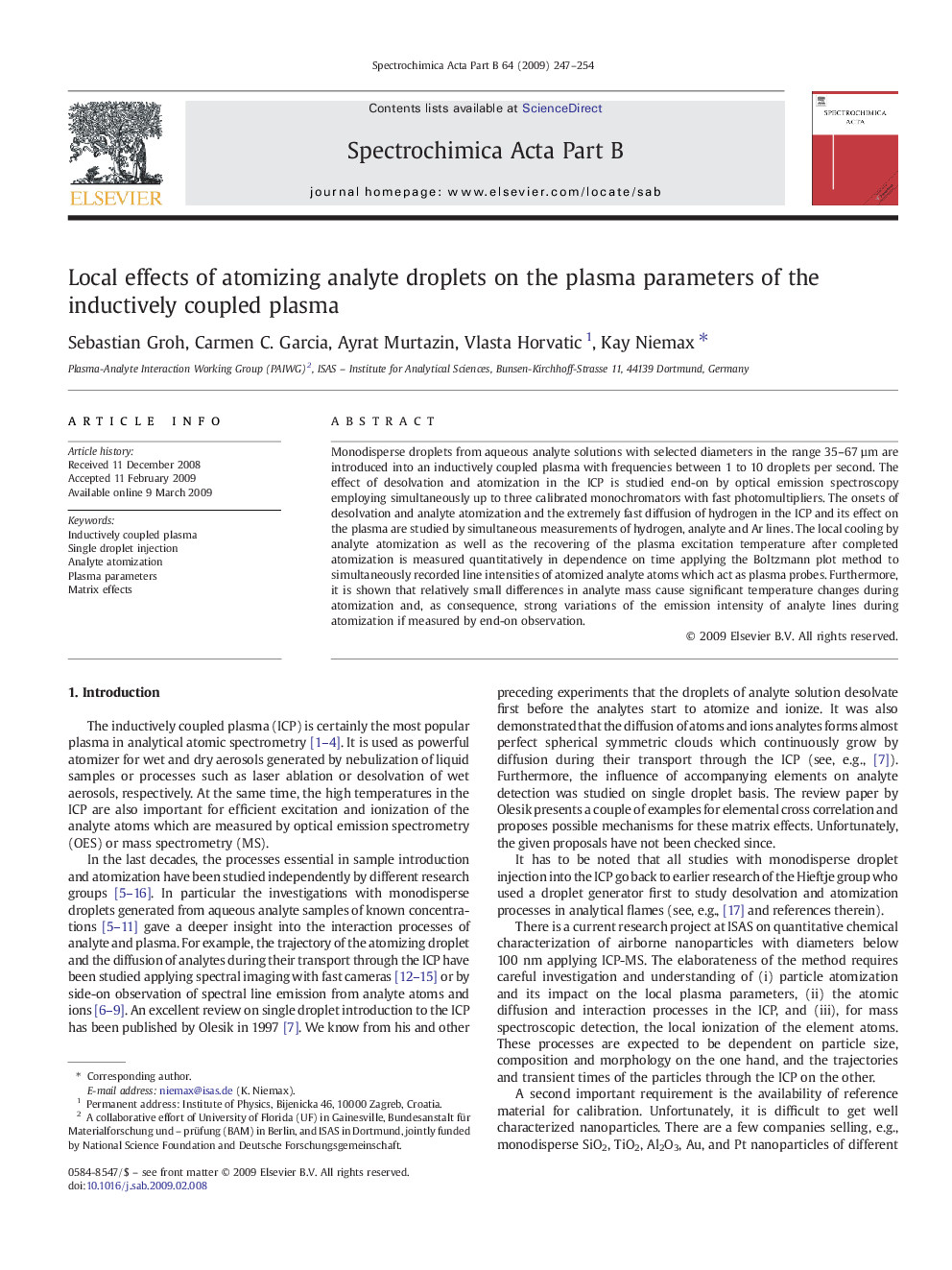| Article ID | Journal | Published Year | Pages | File Type |
|---|---|---|---|---|
| 1240477 | Spectrochimica Acta Part B: Atomic Spectroscopy | 2009 | 8 Pages |
Monodisperse droplets from aqueous analyte solutions with selected diameters in the range 35–67 µm are introduced into an inductively coupled plasma with frequencies between 1 to 10 droplets per second. The effect of desolvation and atomization in the ICP is studied end-on by optical emission spectroscopy employing simultaneously up to three calibrated monochromators with fast photomultipliers. The onsets of desolvation and analyte atomization and the extremely fast diffusion of hydrogen in the ICP and its effect on the plasma are studied by simultaneous measurements of hydrogen, analyte and Ar lines. The local cooling by analyte atomization as well as the recovering of the plasma excitation temperature after completed atomization is measured quantitatively in dependence on time applying the Boltzmann plot method to simultaneously recorded line intensities of atomized analyte atoms which act as plasma probes. Furthermore, it is shown that relatively small differences in analyte mass cause significant temperature changes during atomization and, as consequence, strong variations of the emission intensity of analyte lines during atomization if measured by end-on observation.
